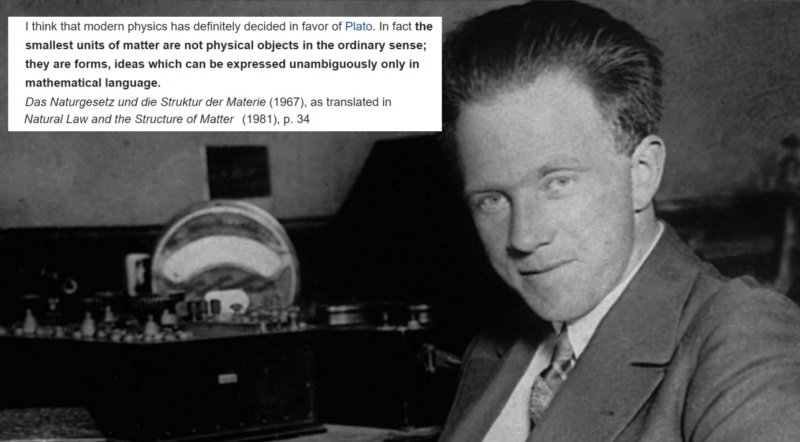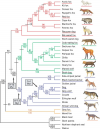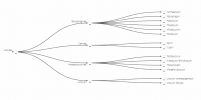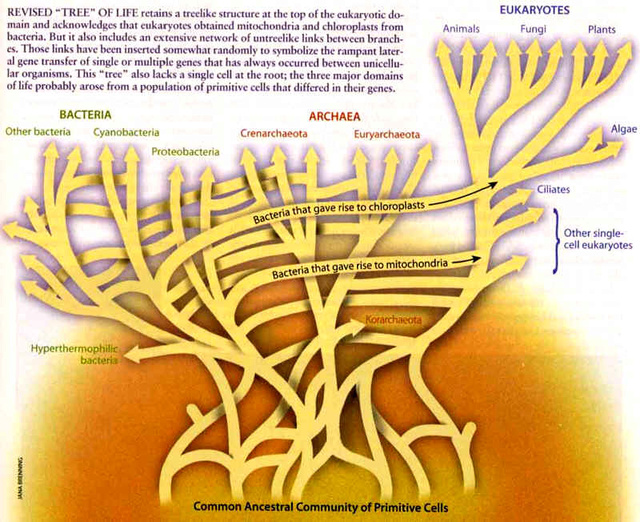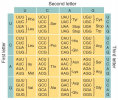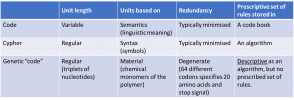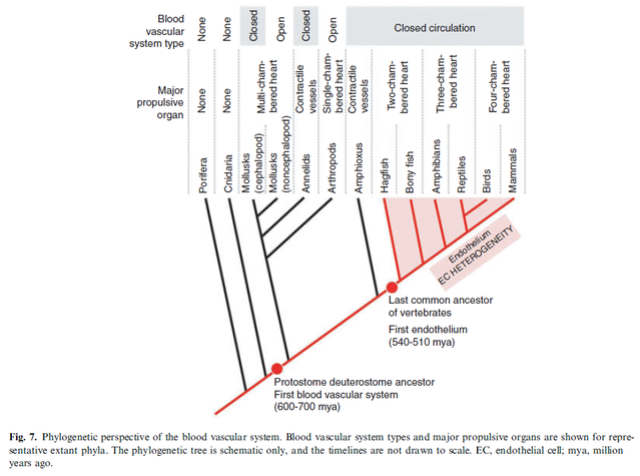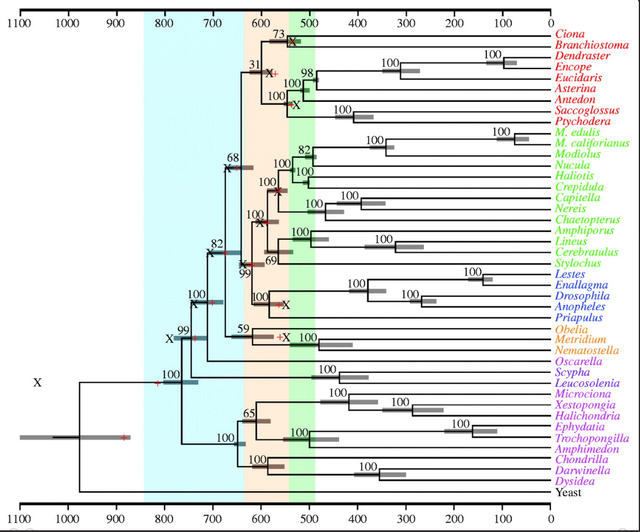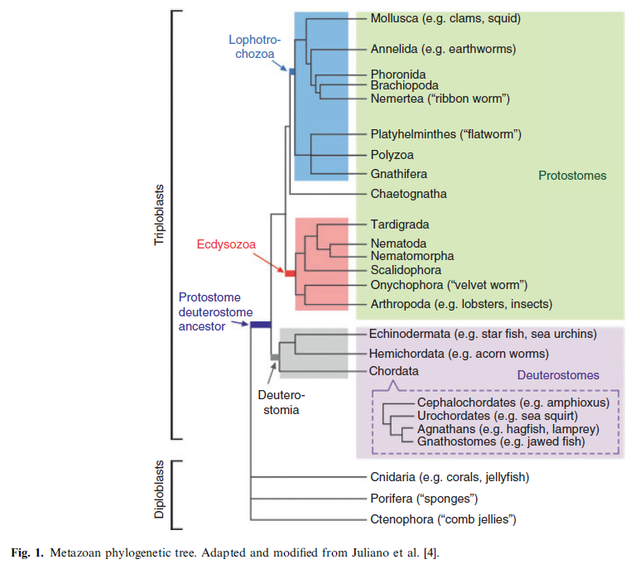rationalist
Member
Nowhere did I conflate the origin of life, with evolution. The origin of life is not possible by natural means.You are still misrepresenting evolution, evolution has absolutely nothing to do where life came from. Evolution is biodiversity of the planet. Life started somewhere and somehow and evolution was the means to get where are we now, different species evolved from one point.
Now it comes to this is your God smart enough to seed (to start from one point) this world and knew what would happen when he seeded this world or is evolution an arbitrary mechanism just as we explained?
The physical world, from micro to macro, depends on Information
There does exist a world (of universals or the form of the Good, which you can identify with God), which transcends the physical empirical world, and this world of intelligible forms is responsible for the “enforcement” of mathematical order in the physical world. Thus, intelligibility is responsible for the physical world. The universe is about information and information processing, and it's matter that emerges as a secondary concept. Simple rules generate what we see in nature. Information is a far more fundamental quantity in the Universe than matter or energy. The atoms or elementary particles themselves are not real; they form a world of potentialities or possibilities rather than one of things or facts. The smallest units of matter are not physical objects in the ordinary sense; they are forms, ideas that can be expressed unambiguously only in mathematical language. Physical atoms are made up of vortices of energy that are constantly spinning and vibrating, each one radiating its own unique energy signature. This is also known as "the Vacuum" or "The Zero-Point Field." Matter as described by the Standard Model of Physics as a kind of epiphenomenon arising out of an informational substrate. I call this theory “informationism” to distinguish it from materialism. What are the basic building blocks of the cosmos? Atoms, particles, mass-energy? Quantum mechanics, forces, fields? Space and time — space-time? Tiny strings with many dimensions? Mathematics is a product of our minds, in exactly the same way that chess, fictional stories, myths, musical compositions, etc, are products of our minds. Thus, upon this conception, the miracle is that the universe happens to conform to our mind generated realities, that the universe is governed, structured, ordered by a mind generated reality. Therefore we can infer the universe is in fact ordered by a like mind upon the basis of the mind-resonating, that is, resonance and conformity to mind-generated realities of mathematics, which the universe possesses.
1. Nature and the universe is mathematical and based on physical laws and rules. Instantiating mathematical laws and rules depends on Information.
2. Proteins are molecular machines that have specific purposes. Their making depends on genetic information.
3. A variety of biological events are performed obeying complex biochemical and biomechanical signals containing instructional information. Those include, for example, cell migration, cell motility, traction force generation, protrusion forces, stress transmission, mechanosensing and mechanotransduction, mechanochemical coupling in biomolecular motors, synthesis, sorting, storage, and transport of biomolecules
4. In living cells, information is encoded through at least 33 genetic, and 43 epigenetic codes and languages.
5. Some convergent informational systems are bat echolocation in bats, oilbirds, and dolphins. That points to a common designer.
6. The Big bang, subatomic particles, the fundamental forces of the universe, the Solar System, the earth, and the moon, in order to permit life, require finely tuned physical parameters, based on information.
7. Setting up life essential error check and repair mechanisms to maintain genetic stability, and minimizing replication, transcription and translation errors, and permit organisms to pass accurately genetic information to their offspring, depends on the error-correcting code, and information to set up the system.
8. Science has unraveled, that cells, strikingly, are cybernetic, ingeniously crafted cities full of factories. Cells contain information, which is stored in genes (books), and libraries (chromosomes). Cells have superb, fully automated information classification, storage, and retrieval programs ( gene regulatory networks ) that orchestrate strikingly precise and regulated gene expression. Cells also contain hardware - a masterful information-storage molecule ( DNA ) - and software, more efficient than millions of alternatives ( the genetic code ) - ingenious information encoding, transmission, and decoding machinery ( RNA polymerase, mRNA, the Ribosome ) - and highly robust signaling networks ( hormones and signaling pathways ) - awe-inspiring error check and repair systems of data ( for example mind-boggling Endonuclease III which error checks and repairs DNA through electric scanning ). Information systems, which prescribe, drive, direct, operate, and control interlinked compartmentalized self-replicating cell factory parks that perpetuate and thrive life. In order to be employed at the right place, once synthesized, each protein receives an instructional information tag with an amino acid sequence, and clever molecular taxis ( motor proteins dynein, kinesin, transport vesicles ) load and transport them to the right destination on awe-inspiring molecular highways ( tubulins, actin filaments ).
The (past) action or signature of an intelligent designer can be detected when we see all the above things. These things are all actions pre-programmed by intelligence in order to be performed autonomously.
Hebrews 11:3 By faith we understand that the universe was formed at God’s command so that what is seen was not made out of what was visible.
Acts 17:28: For in Him we live and move and have our being, as also some of your own poets have said, ‘For we are also His offspring.’
Romans 11:36 For from him and through him and for him are all things.
John 1:3 Through him all things were made; without him nothing was made that has been made.
Colossians 1:16 For in him all things were created: things in heaven and on earth, visible and invisible, whether thrones or powers or rulers or authorities; all things have been created through him and for him.
